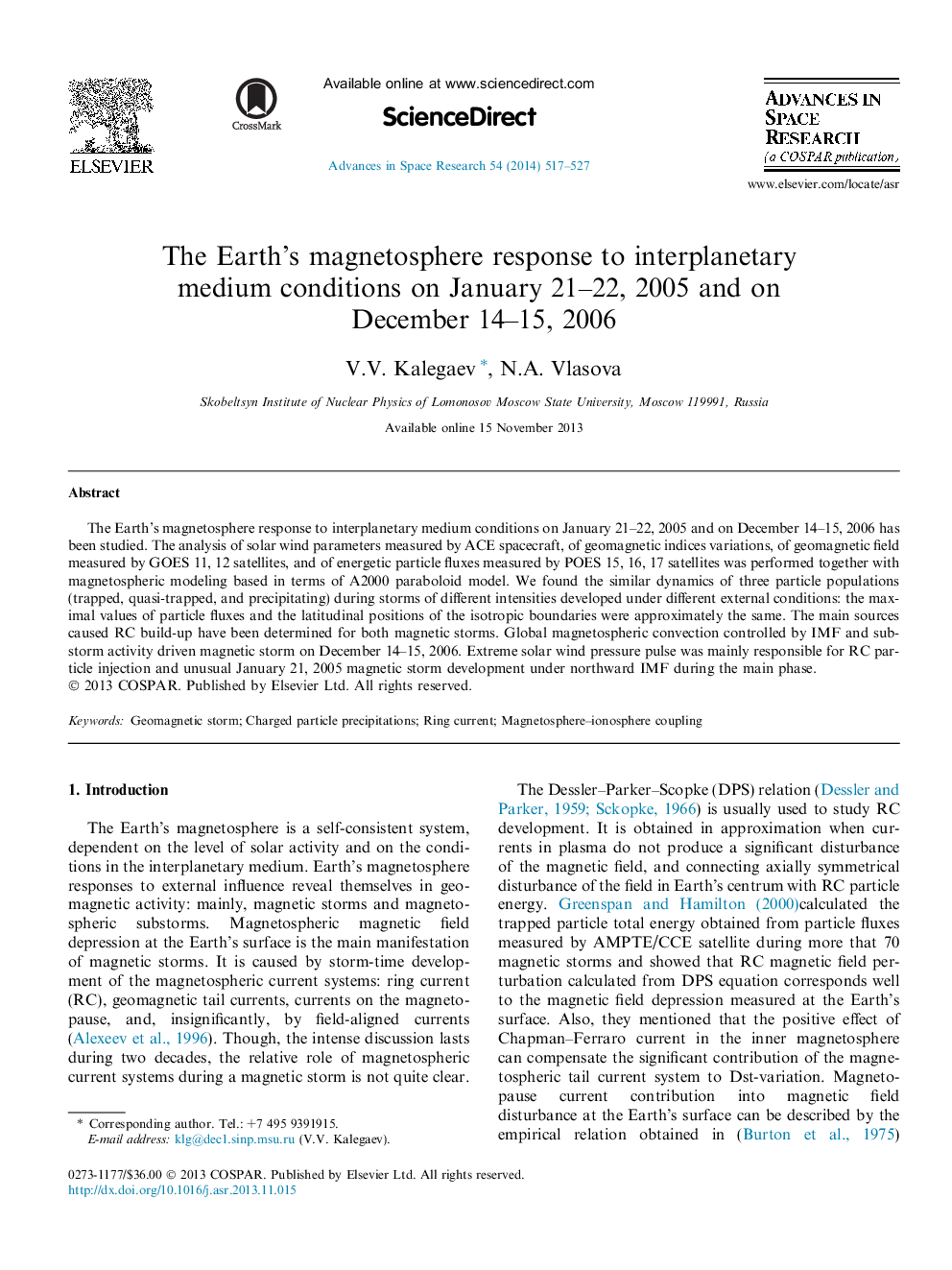| Article ID | Journal | Published Year | Pages | File Type |
|---|---|---|---|---|
| 1764917 | Advances in Space Research | 2014 | 11 Pages |
Abstract
The Earth's magnetosphere response to interplanetary medium conditions on January 21-22, 2005 and on December 14-15, 2006 has been studied. The analysis of solar wind parameters measured by ACE spacecraft, of geomagnetic indices variations, of geomagnetic field measured by GOES 11, 12 satellites, and of energetic particle fluxes measured by POES 15, 16, 17 satellites was performed together with magnetospheric modeling based in terms of A2000 paraboloid model. We found the similar dynamics of three particle populations (trapped, quasi-trapped, and precipitating) during storms of different intensities developed under different external conditions: the maximal values of particle fluxes and the latitudinal positions of the isotropic boundaries were approximately the same. The main sources caused RC build-up have been determined for both magnetic storms. Global magnetospheric convection controlled by IMF and substorm activity driven magnetic storm on December 14-15, 2006. Extreme solar wind pressure pulse was mainly responsible for RC particle injection and unusual January 21, 2005 magnetic storm development under northward IMF during the main phase.
Related Topics
Physical Sciences and Engineering
Earth and Planetary Sciences
Space and Planetary Science
Authors
V.V. Kalegaev, N.A. Vlasova,
